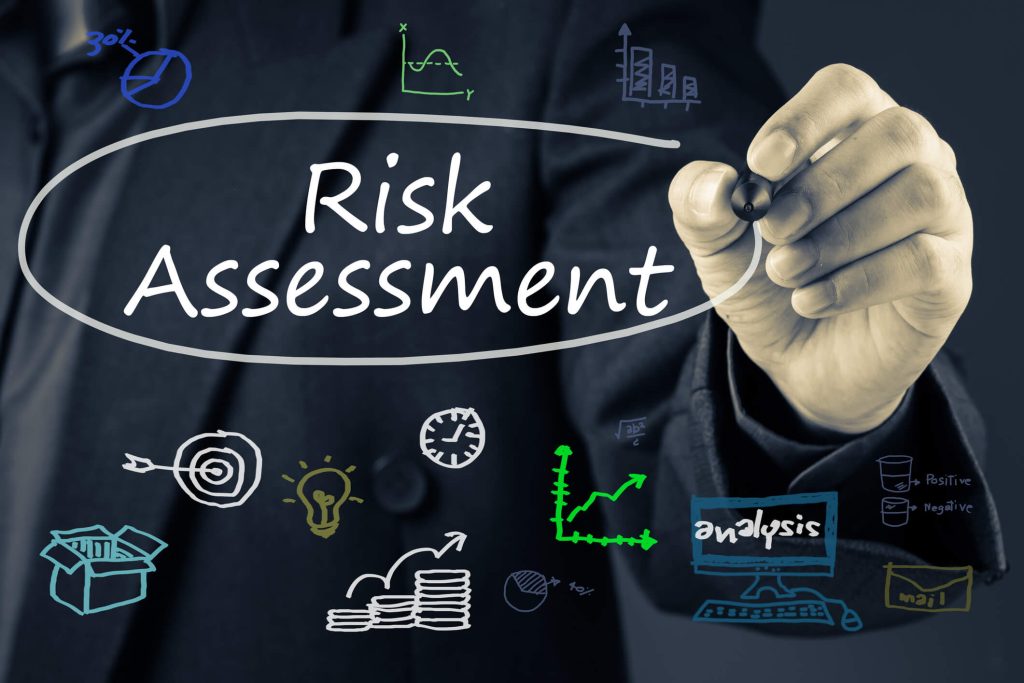
By alphacardprocess September 30, 2024
In today’s digital age, payment processing has become an integral part of our daily lives. From online shopping to mobile payments, the convenience and speed of electronic transactions have revolutionized the way we conduct business. However, with this convenience comes the risk of security breaches and fraud. High-risk payment processing, such as handling sensitive financial information or processing large volumes of transactions, requires robust security measures to protect both businesses and consumers.
One of the most effective ways to ensure the security of payment processing systems is through regular security audits. These audits help identify vulnerabilities, assess risks, and implement necessary controls to safeguard sensitive data. In this article, we will explore the importance of conducting regular security audits in high-risk payment processing and provide a comprehensive guide on how to conduct these audits effectively.
Understanding the Importance of Regular Security Audits
Regular security audits are crucial for businesses involved in high-risk payment processing. They help identify potential vulnerabilities and weaknesses in the system, allowing businesses to take proactive measures to mitigate risks. By conducting audits regularly, businesses can stay ahead of emerging threats and ensure compliance with industry standards and regulations.
The consequences of a security breach in payment processing can be severe. Not only can it result in financial losses for businesses, but it can also damage their reputation and erode customer trust. According to a study by IBM, the average cost of a data breach in 2020 was $3.86 million. This staggering figure highlights the importance of investing in robust security measures and conducting regular audits to prevent such breaches.
Preparing for a Security Audit: Key Steps and Considerations
Before conducting a security audit, it is essential to prepare adequately. This involves understanding the scope of the audit, identifying the key stakeholders, and establishing clear objectives. Here are some key steps and considerations to keep in mind when preparing for a security audit in high-risk payment processing:
- Define the scope: Determine the specific areas of the payment processing system that will be audited. This may include network infrastructure, software applications, data storage, and access controls.
- Identify stakeholders: Identify the key stakeholders involved in the payment processing system, such as IT personnel, security officers, and compliance officers. Ensure their active participation and cooperation throughout the audit process.
- Establish objectives: Clearly define the objectives of the security audit. This may include identifying vulnerabilities, assessing compliance with industry standards, and evaluating the effectiveness of security controls.
- Gather documentation: Collect all relevant documentation related to the payment processing system, including policies, procedures, and security incident reports. This will provide a comprehensive overview of the system and help auditors assess its security posture.
- Conduct a preliminary assessment: Before the actual audit, conduct a preliminary assessment to identify any obvious vulnerabilities or weaknesses. This will help prioritize areas that require immediate attention during the audit.
Conducting a Risk Assessment for High-Risk Payment Processing

A risk assessment is a critical component of a security audit in high-risk payment processing. It involves identifying potential risks, evaluating their likelihood and impact, and implementing appropriate controls to mitigate those risks. Here are the key steps involved in conducting a risk assessment:
- Identify assets: Identify the assets involved in the payment processing system, such as customer data, financial information, and transaction records. This will help determine the potential impact of a security breach on these assets.
- Assess vulnerabilities: Identify potential vulnerabilities in the payment processing system, such as weak passwords, outdated software, or unencrypted data transmission. This can be done through vulnerability scanning tools, penetration testing, and code reviews.
- Evaluate threats: Identify potential threats that could exploit the vulnerabilities identified. This may include external threats such as hackers or internal threats such as disgruntled employees. Consider the likelihood and potential impact of each threat.
- Determine risk levels: Assess the likelihood and impact of each identified risk to determine its overall risk level. This can be done using a risk matrix that assigns a numerical value to each risk based on its likelihood and impact.
- Implement controls: Based on the risk assessment, implement appropriate controls to mitigate the identified risks. This may include implementing firewalls, encryption, access controls, and regular software updates.
Implementing Security Controls and Measures for Payment Processing
Once the risks have been identified and assessed, it is crucial to implement appropriate security controls and measures to protect the payment processing system. Here are some key controls and measures that should be considered:
- Network security: Implement robust network security measures, such as firewalls, intrusion detection systems, and secure network protocols. Regularly monitor network traffic for any suspicious activity.
- Access controls: Implement strong access controls to ensure that only authorized personnel have access to sensitive data and systems. This may include multi-factor authentication, role-based access controls, and regular user access reviews.
- Encryption: Implement encryption for sensitive data, both in transit and at rest. This ensures that even if the data is intercepted, it remains unreadable and unusable to unauthorized individuals.
- Patch management: Regularly update and patch software applications and operating systems to address any known vulnerabilities. Implement a robust patch management process to ensure timely updates.
- Employee training: Provide regular training to employees on security best practices, such as password hygiene, phishing awareness, and social engineering prevention. Employees should be aware of their role in maintaining the security of the payment processing system.
Evaluating and Testing Security Systems and Processes
To ensure the effectiveness of security controls and measures, it is essential to evaluate and test the security systems and processes regularly. This helps identify any weaknesses or gaps in the system and allows for timely remediation. Here are some key evaluation and testing methods:
- Penetration testing: Conduct regular penetration testing to simulate real-world attacks and identify vulnerabilities in the system. This involves attempting to exploit weaknesses in the system’s defenses to gain unauthorized access.
- Vulnerability scanning: Use automated vulnerability scanning tools to identify known vulnerabilities in the payment processing system. Regularly scan the system for any new vulnerabilities and address them promptly.
- Security audits: Conduct periodic security audits to assess the overall security posture of the payment processing system. This involves reviewing policies, procedures, and controls to ensure compliance with industry standards and regulations.
- Incident response testing: Test the incident response plan to ensure that it is effective in mitigating and responding to security incidents. This may involve conducting tabletop exercises or simulated cyber-attack scenarios.
Monitoring and Detecting Security Threats in Payment Processing
Monitoring and detecting security threats in real-time is crucial for high-risk payment processing. This allows businesses to identify and respond to potential security incidents promptly. Here are some key practices for monitoring and detecting security threats:
- Security information and event management (SIEM): Implement a SIEM system to collect and analyze security event logs from various sources, such as firewalls, intrusion detection systems, and servers. This helps identify any suspicious activity or anomalies in the system.
- Intrusion detection and prevention systems (IDS/IPS): Deploy IDS/IPS systems to monitor network traffic and detect any unauthorized access attempts or malicious activity. Configure the systems to generate alerts and take appropriate action when suspicious activity is detected.
- Log monitoring: Regularly review and analyze system logs for any signs of unauthorized access, unusual user behavior, or system anomalies. This can help detect potential security threats or breaches.
- Threat intelligence: Stay updated with the latest threat intelligence information to identify emerging threats and vulnerabilities. This can be done through subscribing to threat intelligence feeds, participating in industry forums, and collaborating with other organizations.
Responding to Security Incidents and Breaches in Payment Processing
Despite robust security measures, security incidents and breaches can still occur. It is crucial to have a well-defined incident response plan in place to minimize the impact of such incidents and ensure a swift and effective response. Here are some key steps to consider when responding to security incidents and breaches:
- Activate the incident response team: As soon as a security incident is detected, activate the incident response team. This team should include representatives from IT, security, legal, and senior management.
- Contain the incident: Take immediate action to contain the incident and prevent further damage. This may involve isolating affected systems, disabling compromised accounts, or blocking malicious IP addresses.
- Investigate the incident: Conduct a thorough investigation to determine the cause and extent of the security incident. This may involve analyzing system logs, conducting forensic analysis, and interviewing relevant personnel.
- Notify stakeholders: Notify all relevant stakeholders, including customers, partners, and regulatory authorities, about the security incident. Provide timely and accurate information about the incident and the steps being taken to mitigate its impact.
- Remediate and recover: Take appropriate measures to remediate the vulnerabilities or weaknesses that led to the security incident. This may involve patching systems, updating security controls, or implementing additional security measures.
Best Practices for Maintaining Security in High-Risk Payment Processing
Maintaining security in high-risk payment processing requires a proactive and ongoing effort. Here are some best practices to consider:
- Regularly update security policies and procedures to reflect the evolving threat landscape and industry standards.
- Conduct regular employee training on security awareness and best practices.
- Implement a robust change management process to ensure that any changes to the payment processing system are thoroughly tested and approved.
- Regularly review and update access controls to ensure that only authorized personnel have access to sensitive data and systems.
- Engage third-party security experts to conduct independent audits and assessments of the payment processing system.
- Stay updated with the latest security patches and updates for all software applications and systems.
- Regularly backup critical data and test the restoration process to ensure data integrity and availability.
- Monitor and review security logs and alerts on a regular basis to detect any potential security threats or anomalies.
- Continuously monitor and assess the effectiveness of security controls and measures through regular audits and testing.
- Stay informed about emerging security threats and vulnerabilities through industry publications, forums, and security conferences.
FAQs
Q.1: What is a security audit in high-risk payment processing?
A security audit in high-risk payment processing is a systematic evaluation of the security controls and measures implemented to protect sensitive financial information and ensure compliance with industry standards and regulations.
Q.2: How often should security audits be conducted in high-risk payment processing?
Security audits should be conducted at least annually in high-risk payment processing. However, the frequency may vary depending on factors such as the volume of transactions, the complexity of the system, and the evolving threat landscape.
Q.3: What are the consequences of a security breach in payment processing?
The consequences of a security breach in payment processing can be severe. It can result in financial losses, damage to reputation, legal liabilities, and loss of customer trust.
Q.4: What is a risk assessment in high-risk payment processing?
A risk assessment in high-risk payment processing involves identifying potential risks, evaluating their likelihood and impact, and implementing appropriate controls to mitigate those risks.
Q.5: What are some common security controls and measures for payment processing?
Common security controls and measures for payment processing include network security, access controls, encryption, patch management, and employee training.
Conclusion
Regular security audits are essential for businesses involved in high-risk payment processing. They help identify vulnerabilities, assess risks, and implement necessary controls to safeguard sensitive data. By conducting audits regularly, businesses can stay ahead of emerging threats and ensure compliance with industry standards and regulations.
The key steps involved in conducting a security audit include preparing adequately, conducting a risk assessment, implementing security controls, evaluating and testing security systems, monitoring and detecting security threats, and responding to security incidents. By following best practices and staying proactive, businesses can maintain the security of their payment processing systems and protect both themselves and their customers from potential security breaches.
